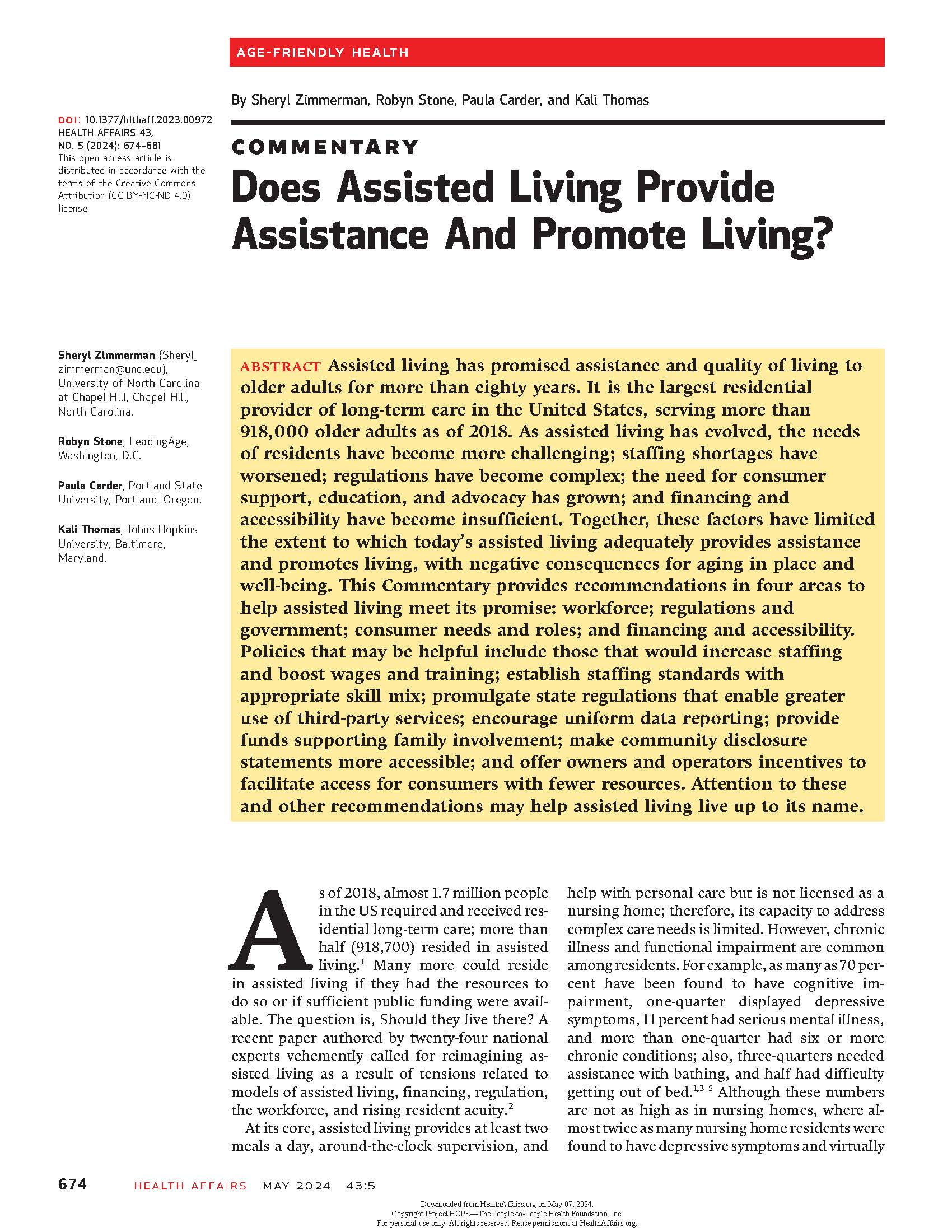Objective
To examine transitions to an assisted living facility among community-dwelling older adults who received publicly funded home care services.
Design
Nested case-control study.
Setting and Participants
Linked, population-level health system administrative data were obtained from adults aged 65 years and older who received home care services in Ontario, Canada, from April 1, 2018, to December 31, 2019. New residents of assisted living were matched on age, sex, and initiation date of home care (± 7 days) to community-dwelling home care recipients in a 1:4 ratio.
Methods
Clinical and functional status, health service use, sociodemographic variables, and community-level characteristics were examined; conditional logistic regression was used to model associations with a transition to an assisted living facility.
Results
There were 2427 new residents of assisted living who were matched to 9708 home care recipients [mean (SD) age 85.5 (6.02) years, 72% female]. Most of the new residents were concentrated in urban communities and communities with higher income quintiles. New residents had an increased rate of physician-diagnosed dementia [adjusted hazard ratio (aHR), 1.28; 95% CI, 1.14–1.43], mood disorders (aHR, 1.17; 95% CI, 1.05–1.29), and cardiac arrhythmias (aHR, 1.19; 95% CI, 1.07–1.32). They also had higher rates of mild cognitive impairment (aHR, 1.43; 95% CI, 1.24–1.66), 2 or more falls (aHR, 1.29; 95% CI, 1.11–1.51), participation in activities of long-standing interest in the past 7 days (aHR, 1.29; 95% CI, 1.11–1.50), and a lower rate of a spouse or partner unpaid caregiver vs a child (aHR, 0.66; 95% CI, 0.56–0.79).
Conclusions and Implications
New residents of assisted living were mostly women, were cognitively impaired, had clinical comorbidities that could increase their risk of injuries, and had caregivers who were their children. These findings stress the importance of upscaling memory and dementia care in assisted living to address the needs of this population.

Center for Excellence in Assisted Living CEAL@UNC
Advancing the well-being of the people who live and work in assisted living through research, practice, and policy.

